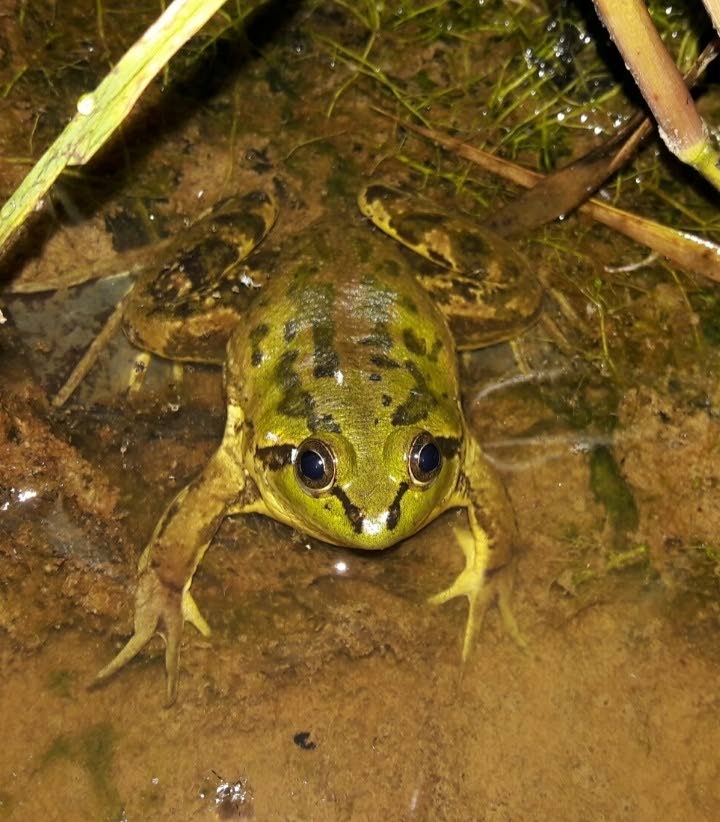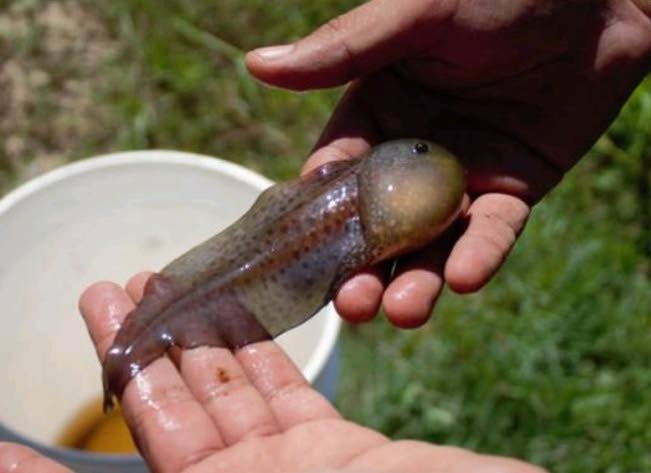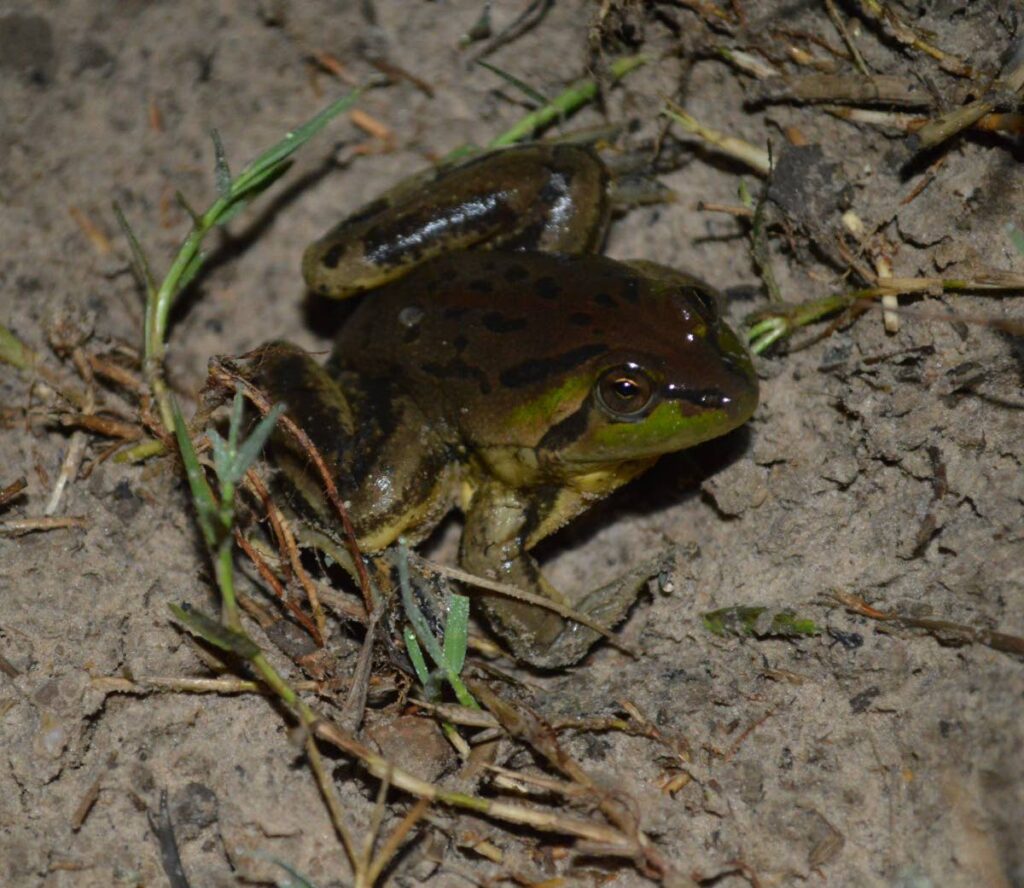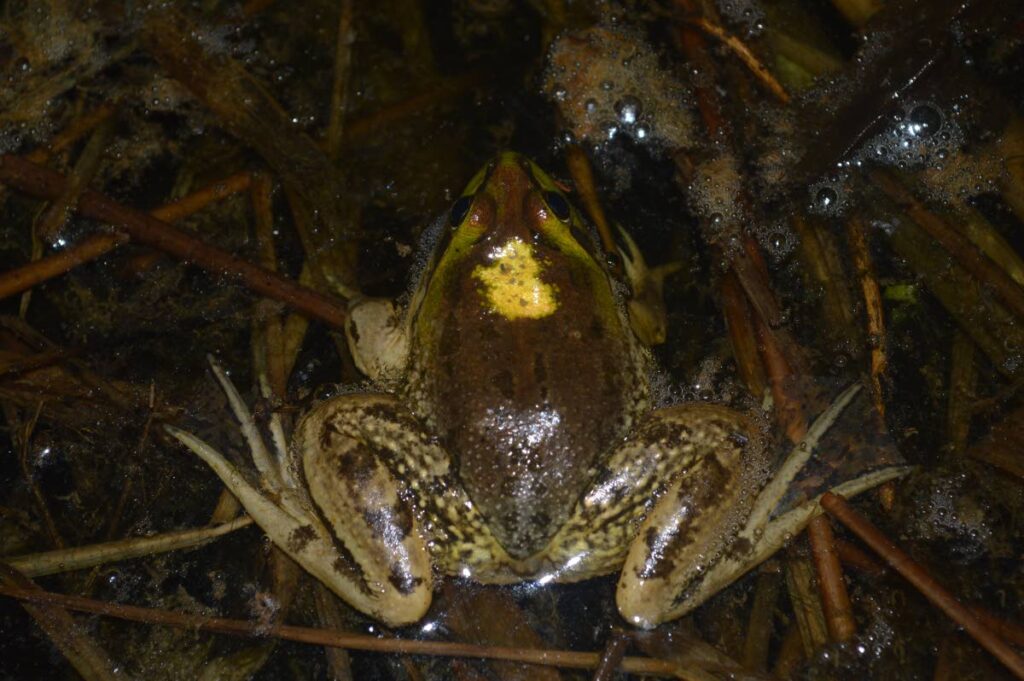Trinidad paradox, the frog that gets big before it gets small

Oxford Dictionary defines the word paradox as “a person, thing or situation that has two opposite features and therefore seems strange.”
So it’s no surprise that a frog which gets bigger before it gets smaller has been named the paradoxical frog (Pseudis paradoxa).
Yes, you read that correctly: there’s a frog which gets bigger before it gets smaller.
Conservationist Renoir Auguste told Newsday Kids that paradoxical frogs got their name owing to the fact that they are larger as tadpoles than they are as adults.

If you’re confused still, Auguste explained, “The tadpoles of these frogs aren’t born larger than the adults, they are born very small.
“However, as these tadpoles grow, they can grow almost as long as a ruler.
"But they begin to shrink when they are metamorphosing (into adults), so that’s the paradox. Adults in this frog species don’t grow more than seven centimetres.
“This is probably one of the most interesting frogs we have here in TT because of that.”
Now you may be wondering, how and why do these tadpoles grow so big?
Auguste said they eat a lot, which contributes to their rapid growth.
Scientists are still a little unsure as to why.

But the soundest theory is that these frogs have developed this trait to increase their chances of survival from the tadpole stage to adulthood.
And while you may still be trying to wrap your head around their shrinking act, it’s not the only “magical” thing about these frogs, because they may also have healing properties.
Auguste told Newsday Kids, “They have peptides in their skin and these peptides are used to help defend the frog from infections.
“But interestingly, some scientists have found that there is a particular property in the peptide that actually contributes to releasing insulin. This could mean there’s a chance that these frogs’ skin secretions can be used to make a drug to help treat diabetes.”
Scientists are still doing research on the medicinal value of the secretions.
Outside South America, Trinidad is the only place these frogs are found. However, they are not found everywhere in Trinidad because they favour certain environments.
“In Trinidad, they are found in lowland areas especially near marshy areas with lots of ponds and lily pads.

“One particular area where you can find them is just outside the Nariva Swamp in Kernaham Village (Mayaro).”
The International Union for Conservation of Nature (IUCN) has classified these frogs as being of least concern, which means they are not at risk of becoming extinct, and have healthy population numbers.
Like most frogs, they feed on small insects like mosquitoes and flies, which helps to keep the population of these insects in check. Hence they play an important role in ecosystems.


Comments
"Trinidad paradox, the frog that gets big before it gets small"